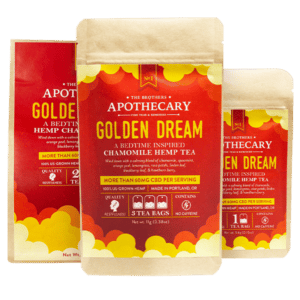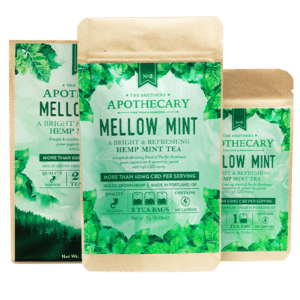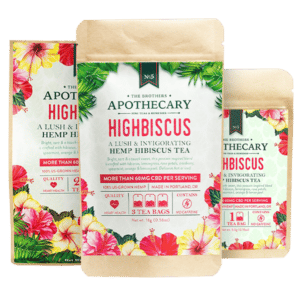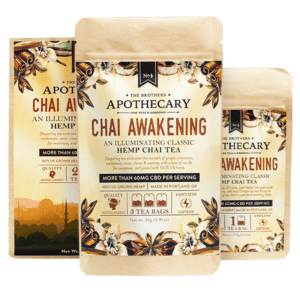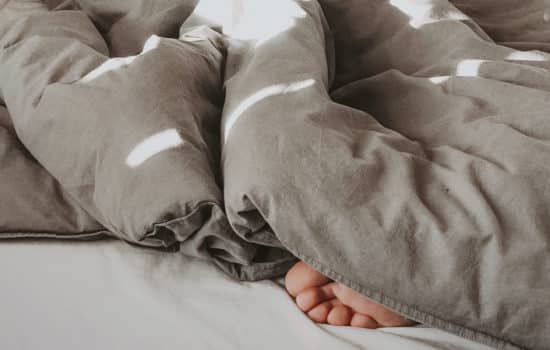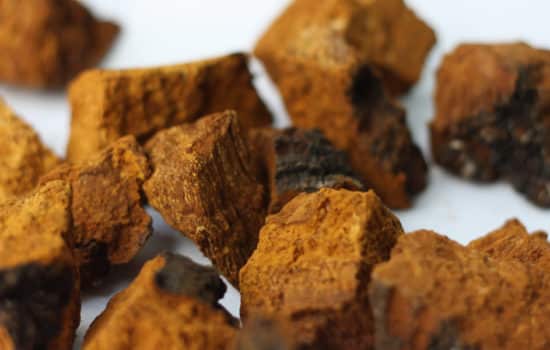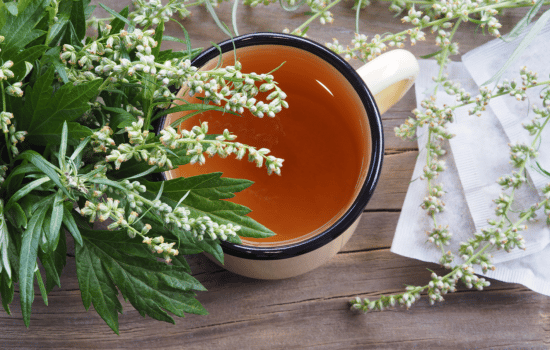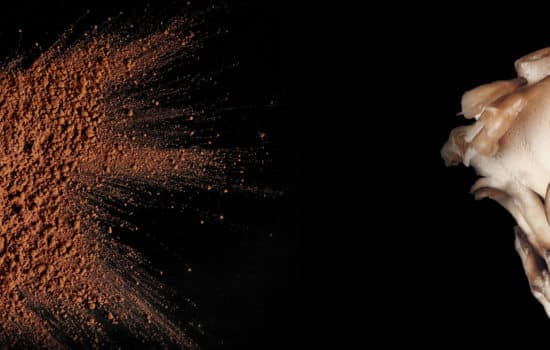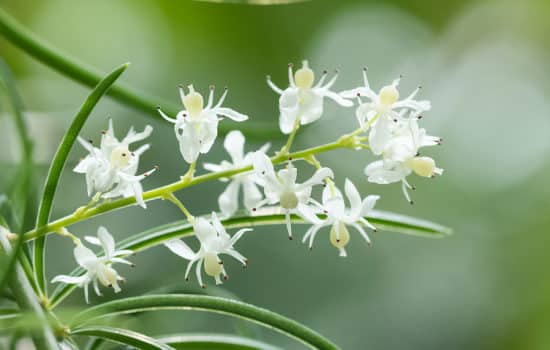This dazzling flowered plant is gaining popularity in the culinary world and is already a staple in herbal remedies used in Southeastern Asia.
Found predominantly in Thailand, butterfly blue pea is a tropical plant species of the Fabaceae family – the family of legumes, peas, and beans – and is also known as Clitoria ternatea, or Asian pigeonwings.
As you may be able to guess from the name, the butterfly blue pea flowers that grow along the plant’s vines are revered for their striking blue color. The blue is the result of a concentration of water-soluble color pigments, known as anthocyanins, which are found in plants, including leaves, stems, and flowers. However, the anthocyanin compounds responsible for the great blue hue also play a role in the butterfly blue pea’s many health benefits.
What Are the Benefits of Butterfly Blue Pea?
Similar to other naturally blue foods like blueberries, the butterfly blue pea contains antioxidant-packed anthocyanins called ternatins. These compounds can help support several body functions, which we will dive into below.
Moods and Emotions Regulation
A cup of butterfly blue pea flower tea with its naturally calming aroma can help awaken and clear the mind while grounding the body. Butterfly blue pea is considered a nootropic, meaning it can help support brain function due to its antioxidant and anti-inflammatory properties.
Research suggests that ongoing stress can be related to redness and swelling. It can also lead to a negative headspace, resulting in more swelling as the body tries to respond to the source of stress. However, the ternatins in butterfly blue pea are thought to help reduce redness and swelling, ease tension, improve energy levels, and support emotional regulation.
The chemical compounds within the blue butterfly pea extract are also thought to increase the levels of acetylcholine, which is a neurotransmitter produced in the brain and released by nerve cells to send chemical messages to other cells throughout the body. Meanwhile, high levels of acetylcholine are associated with improved memory and cognitive function.
Blood Sugar Support
Butterfly blue pea flower tea has been used to help control blood sugar levels. The high concentration of phenolic acid and phenolic amide antioxidants in the blue pea flower may help the pancreas release insulin hormones, which can, in turn, support the metabolism of glucose and help regulate the amount of sugar being absorbed into body cells.
Heart Health
The ternatin bioflavonoid compound that makes the butterfly pea flower so aesthetically pleasing can also support your heart.
The antioxidants can help prevent oxidative stress, which can put pressure on the heart over time, leading to a number of potentially harmful health conditions. Ternatin may also lower levels of LDL (“bad”) cholesterol in the body while increasing HDL (“good”) cholesterol levels, which can further protect the heart.
Blood Pressure Management
Research suggests that antioxidants can also help control blood pressure.
Free radicals are unstable atoms in the body that can increase when we are exposed to pollutants. Free radicals are capable of destroying healthy cells and causing oxidative stress, which can have a negative effect on blood pressure.
However, the natural antioxidants found in many fruits, vegetables, and herbs can help support healthy blood pressure levels by helping to stabilize free radicals.
With the high levels of antioxidants in butterfly blue pea’s anthocyanin compounds can make a cup of blue tea a powerful addition to your daily routine.
Relief from Swelling
Butterfly blue pea flowers can also help reduce swelling and provide relief to the related discomfort. The high levels of the epigallocatechin gallate (EGCG) catechin and other flavonoids, tannins, and polyphenols serve as antioxidants capable of reducing swelling and boosting the immune system.
What Is the Most Common Way To Consume Butterfly Blue Pea?
There is no shortage of ways to enjoy the butterfly blue pea. The flowers have been used to add natural coloring to several traditional Southeast Asian desserts, such as sticky rice and rice cakes.
Blue pea flower has also become increasingly popular in mixology, adding a visually pleasing spin to traditional cocktails.
Most often, however, you’ll find butterfly blue pea flower in teas, where its soothing aroma and slightly sweet flavor can be enjoyed night or day. The blue pea flower tea is caffeine-free, although it can be mixed with other herbs to add caffeine content, as is done in our centering Butterfly Blue Jasmine Tea.
One of our favorite aspects of the blue tea is that you can actually watch the color of the flowers change as it steeps in hot water. This is due to changing the pH level. For instance, a bit of lemon juice can turn the water purple. This can be a calming and grounding activity to enjoy before reaping the benefits that come from drinking the tea.
Does Butterfly Blue Pea Have Skin Benefits?
Along with its many nutritional benefits, butterfly blue pea can also be a luxurious and soothing addition to your skincare routine.
Redness Relief
The vitamins and minerals in the blue pea flowers can also improve skin hydration when applied topically, helping to relieve redness and dryness.
The flavonoids in the butterfly blue pea flowers are also thought to help increase the production of the collagen protein within the body. Collagen plays a huge role in skin health and maintains elasticity.
Youthful Effects
Antioxidants have powerful anti-aging properties that can benefit your skin.
When free radicals damage healthy skin cells, it can lead to signs of premature aging, such as wrinkles and lines. The body also becomes less capable of fighting off free radicals with age, so obtaining natural sources of antioxidants that can protect the skin cells from free radicals becomes even more important over time.
The body also produces less collagen with age, so the potential for blue pea flower flavonoids to support collagen production can help further slow the physical signs of aging skin.
Is Butterfly Blue Pea Safe?
As a natural antioxidant, butterfly blue pea is considered safe, although it should be used in moderation. Experts suggest having between one and three cups of blue tea per day, as too much can cause dehydration.
You should also consult with a healthcare professional if you are pregnant, breastfeeding, taking medication, or have a history of chronic illness.
Conclusion
Much of the world is in awe of this bright and calming blue flower, and we are right there with them. The Brothers Apothecary loves incorporating this magic-like herb into our teas and topicals, bringing you the benefits in all of its many forms.
Sources:
Cholinergic modulation of the hippocampal region and memory function | J Neurochem
Effect of Natural Food Antioxidants against LDL and DNA Oxidative Changes | Antioxidants (Basel)
Antioxidant vitamins and blood pressure | Curr Hypertens Rep
Cosmetic and Dermatological Properties of Selected Ayurvedic Plant Extracts | Molecules
Jesse Richardson is the co-founder of The Brothers Apothecary. He's an avid tea drinker and the primary creator behind The Brothers' products. An undergraduate of UCLA for Political Science, Jesse currently studies Medicinal Plants at Cornell University and The International School of Herbal Arts & Sciences.



